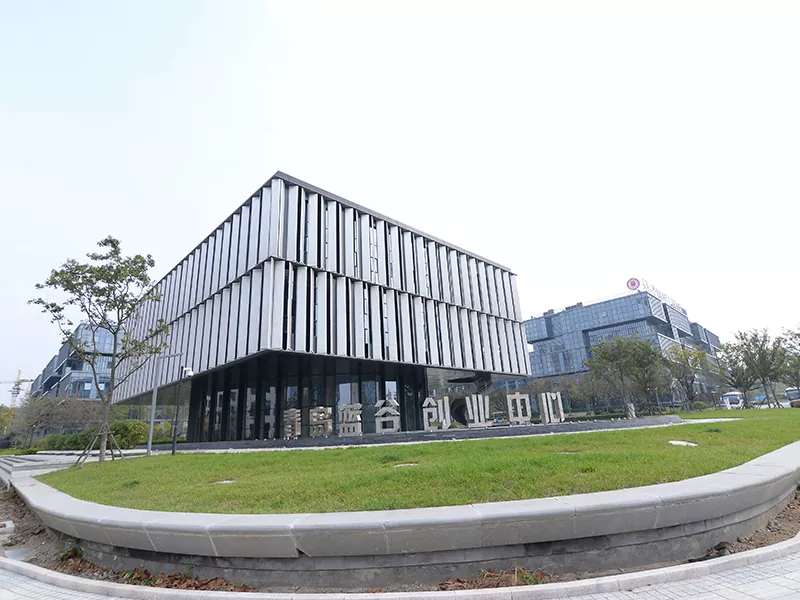QR Code

Products
Contact Us

Phone

E-mail

Address
No. 568, Yanqing First Class Road, Jimo High-tech Zone, Qingdao City, Shandong Province, China

Prefabricated Steel High-Rise buildings have several advantages:
Research has shown that prefabricated steel buildings have a longer lifespan than traditional buildings. Prefabricated Steel High-Rise buildings can last up to 50 years or more, while traditional buildings have a lifespan of around 25 years. This is due to the use of steel, which is a more durable and resistant material than concrete and wood used in traditional buildings. Moreover, steel does not corrode or decay like other materials, making it a more sustainable and long-lasting solution for high-rise buildings.
Despite its many advantages, Prefabricated Steel High-Rise buildings come with a few challenges:
Overall, the advantages of using Prefabricated Steel High-Rise buildings outweigh the challenges, making them a popular choice for modern construction projects.
Prefabricated Steel High-Rise buildings are a sustainable, cost-effective, and durable solution for modern construction projects. Their superior strength and durability, flexibility in design, and eco-friendliness make them an ideal choice for high-rise buildings. Despite some challenges, they continue to gain traction in the construction industry and are poised to revolutionize the way we build in the future.
Qingdao Eihe Steel Structure Group Co., Ltd. is a leading manufacturer of prefabricated steel structures, including Prefabricated Steel High-Rise buildings. With over 20 years of experience, they have completed projects in several countries, providing customized solutions to clients. Contact them at qdehss@gmail.com for more information.
1. Babadagli, T., & Hasancebi, N. (2019). Performance of mid-rise steel structures under prolonged heating. Journal of Constructional Steel Research, 160, 261-274.
2. Chen, Z., Lu, X., Wang, G., & Xiao, Y. (2018). Failure mode and stability improvement of steel outrigger truss-concrete tube arch structure under strong earthquakes. Journal of Constructional Steel Research, 148, 293-303.
3. Gao, W., Yang, Q., Wu, L., & Wang, P. (2019). Numerical simulation and performance evaluation of Q690E high-strength steel with a wide flange beam under fire. Journal of Constructional Steel Research, 157, 136-149.
4. Huang, J., Guo, T., Yao, G., Dong, R., & Li, R. (2018). Fatigue performance of corroded steel bridge girders repaired by carbon fiber-reinforced polymer. Journal of Constructional Steel Research, 146, 297-306.
5. Li, B., Li, R., Chen, B., & Wu, J. (2019). Numerical and experimental study on seismic behavior of profiled steel sheeting dry board with fasteners and interior stiffeners. Journal of Constructional Steel Research, 156, 17-28.
6. Li, H., Xu, L., Zhang, Z., & Teng, J. G. (2017). An experimental study on the behavior of lightweight steel-foam-steel sandwich panels under in-plane shear. Journal of Constructional Steel Research, 129, 61-70.
7. Wang, J., Chen, Z., Wang, P., Xu, X., & Zhang, W. (2019). Performance assessment of steel truss-reinforced concrete flat slab composite structures. Journal of Constructional Steel Research, 158, 78-88.
8. Wang, P., Wang, Q., & Li, J. (2018). Experimental study on fatigue strength of steel storage rack components. Journal of Constructional Steel Research, 144, 225-236.
9. Wang, Y., Luo, Y., Wang, Z., & Lu, X. (2017). Seismic performance of the complex steel-concrete coupling beam of lateral resilient system in a nuclear power plant. Journal of Constructional Steel Research, 130, 227-242.
10. Xiong, Q., Zeng, X., Huang, Z., & Liu, X. (2018). Buckling behaviors of steel-concrete composite column with small H-shaped steel section subjected to cyclic loads. Journal of Constructional Steel Research, 148, 599-606.




No. 568, Yanqing First Class Road, Jimo High-tech Zone, Qingdao City, Shandong Province, China
Copyright © 2024 Qingdao Eihe Steel Structure Group Co., Ltd. All Rights Reserved.
Links | Sitemap | RSS | XML | Privacy Policy |
Teams
